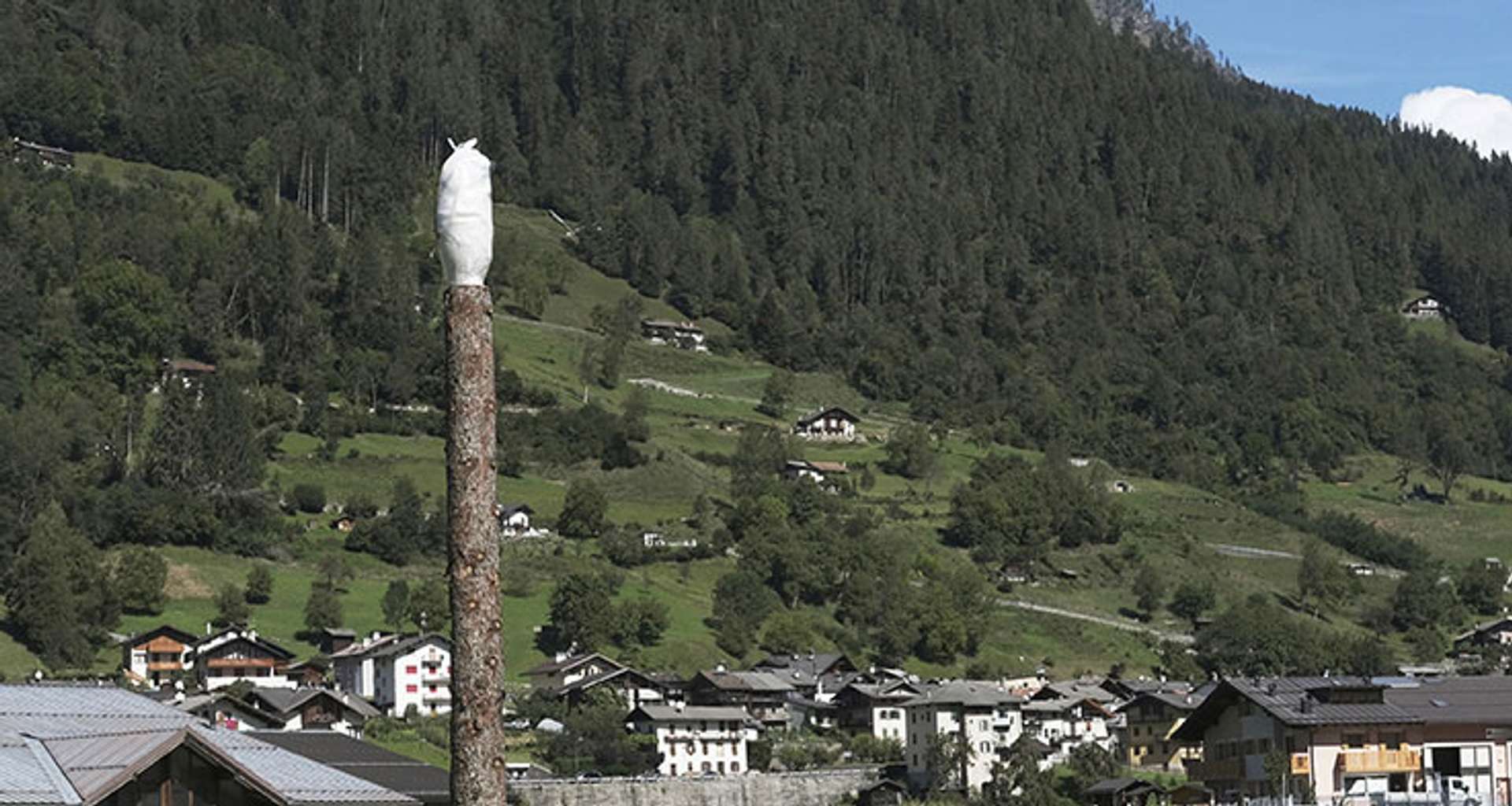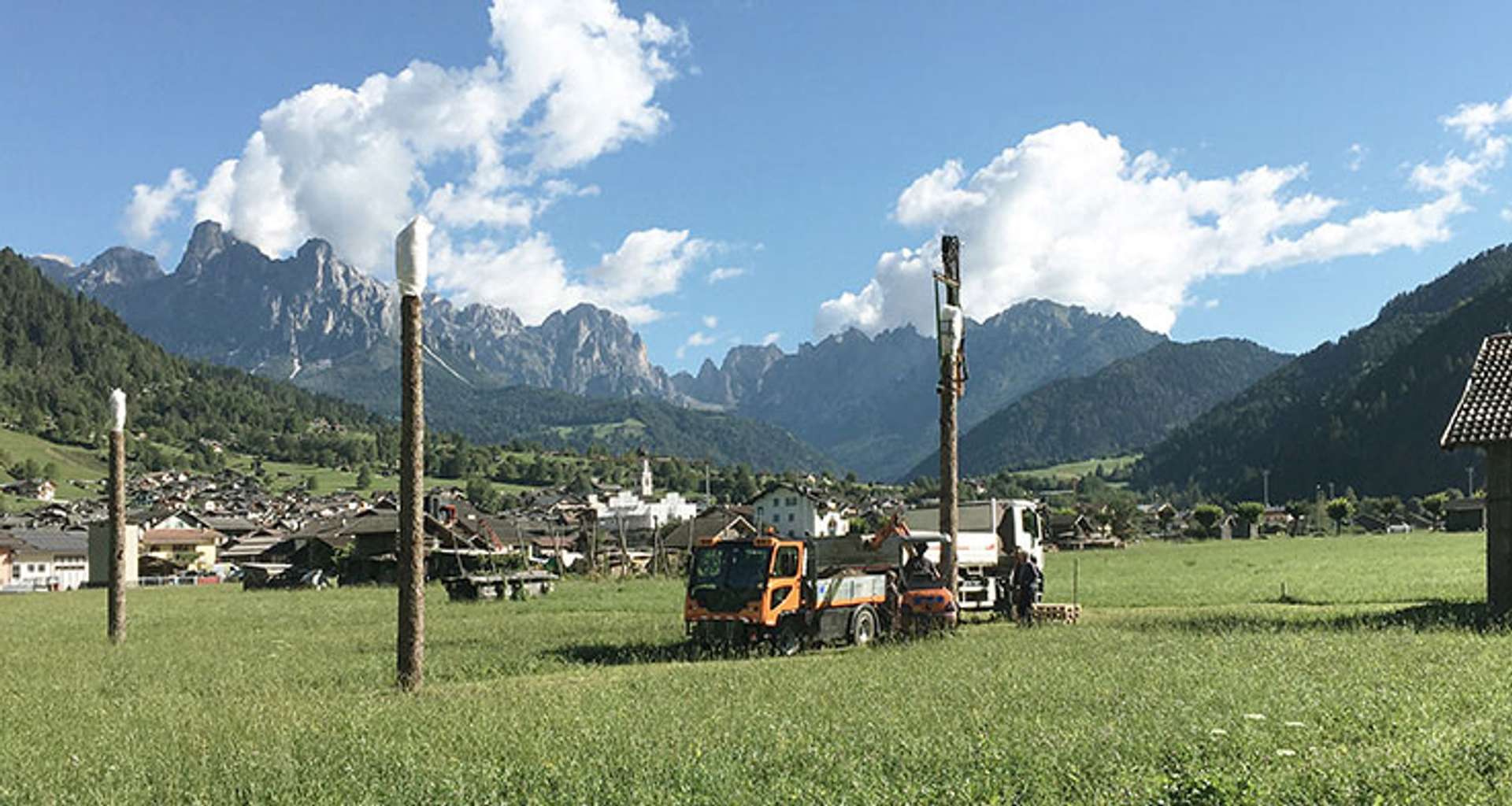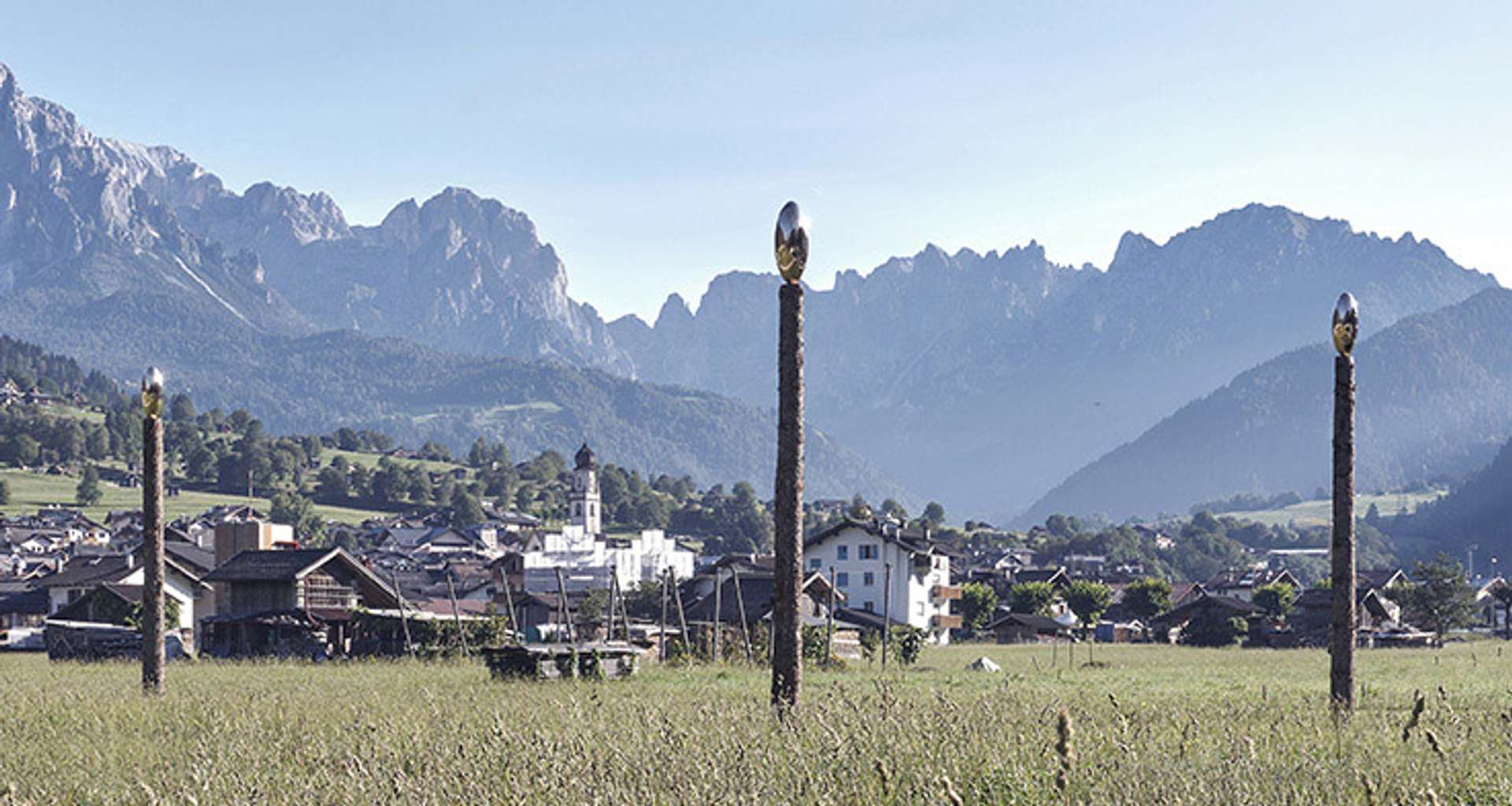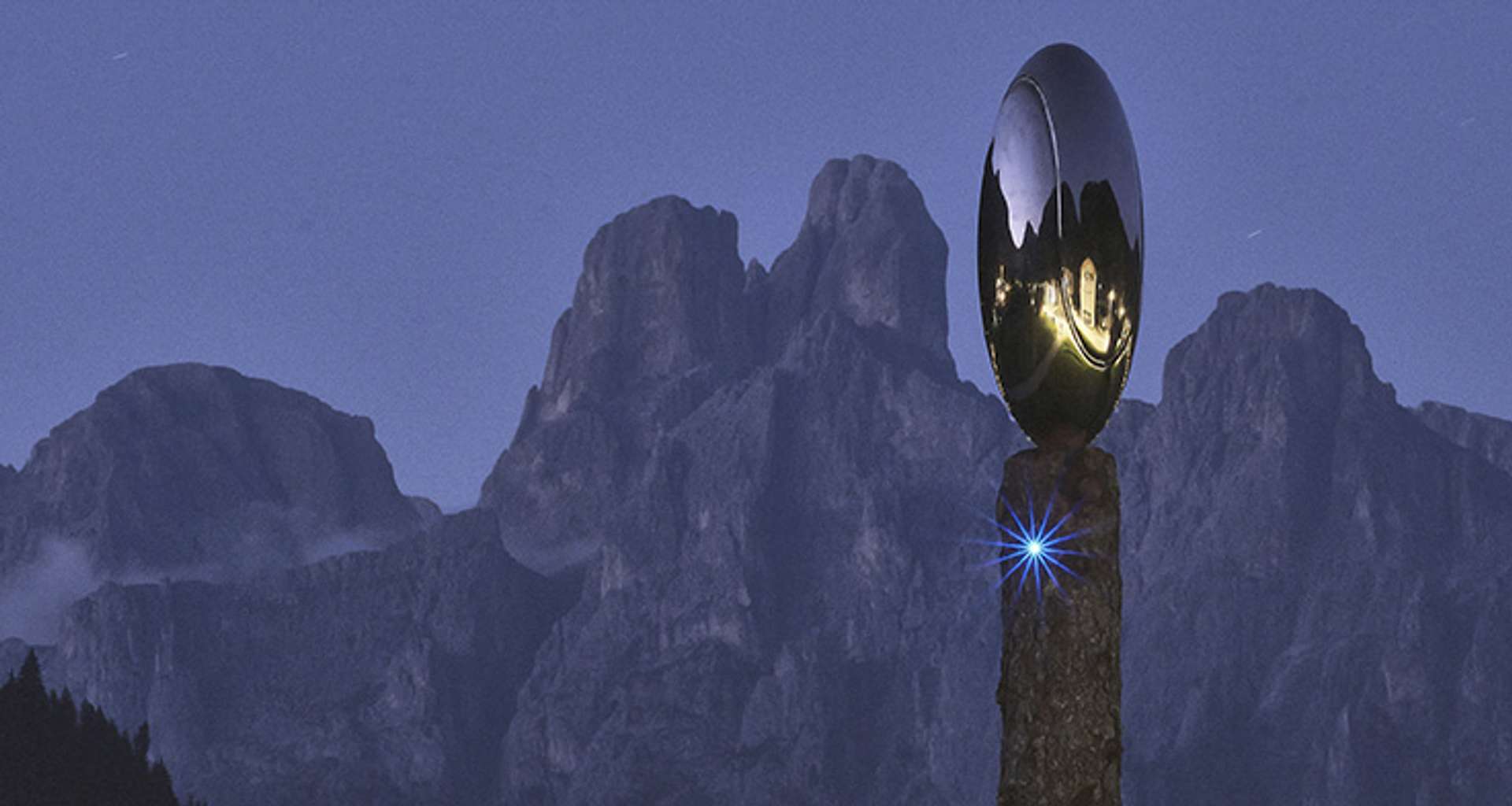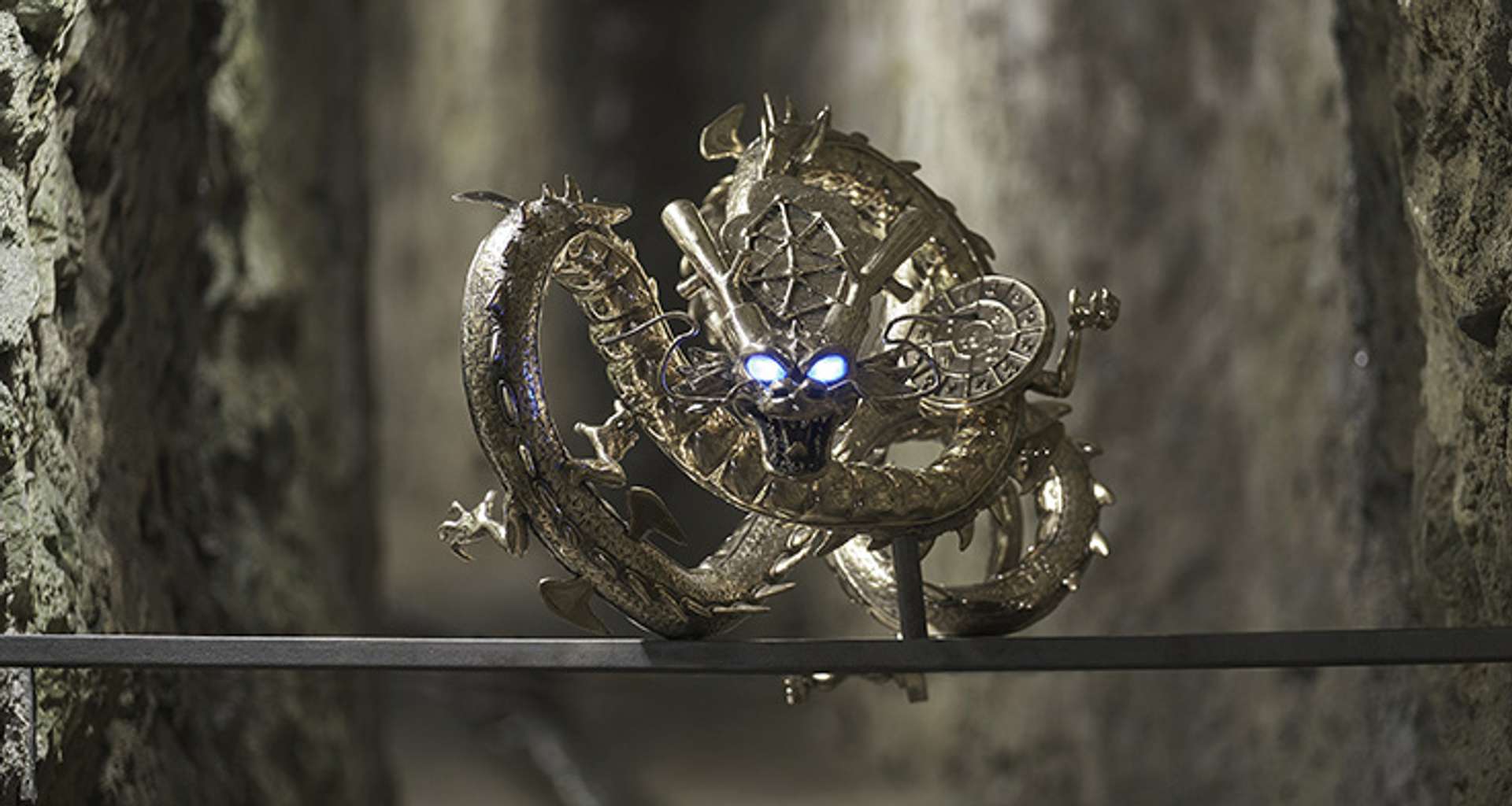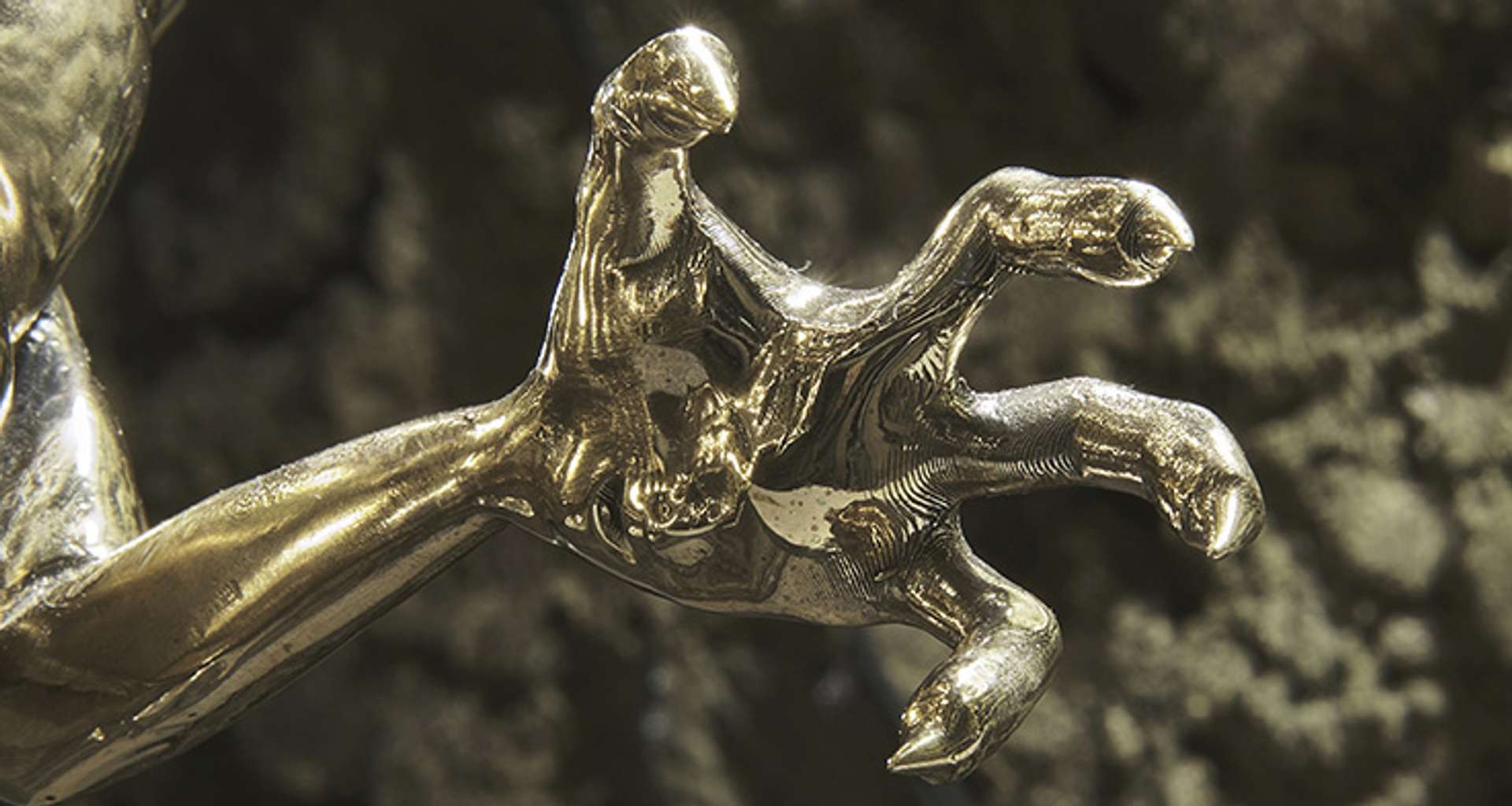The old folk legends and traditions of Mezzano center on the idea of predicting the future, as a way of staying safe from natural disasters: living in the mountains, particularly in the past, was difficult and risky. But Luca Pozzi’s approach looks toward the future in a positive way: taking a privileged point of view toward the distant past, and contributing to a renewal of the relationship between myth and legend, between art and science. ARKANIANS explores these fascinations and brings them to an interdisciplinary level, fusing contemporary art with theoretical physics.
Dragon’s Eggs and Arkanian Shenron bring together different languages and age-old techniques, such as bronze casting or totemic woodworking, and the aerospace engineering of INFN (National Institute of Nuclear Physics).
The Dragon’s Eggs, positioned in an open field at the foot of the village, observe Mezzano from atop their pedestals – three white fir trunks almost 5 meters high – and are equipped with muon particle detectors.
THE SCULPTURE REFLECTS THE MYTHOLOGY OF MY INTERDISCIPLINARY LANGUAGE, WITH REFERENCES THAT RANGE FROM CARTOON IMAGERY TO THE RENAISSANCE –AND FROM COMPUTER SCIENCE TO THEORETICAL PHYSICS
Luca Pozzi (Milan, 1983) studies quantum gravity, cosmology and particle physics. His theoretical research is converted into a series of hybrid installations featuring magnetic sculptures, levitating objects, AR/VR, and a performative use of photography.
TAKING A PRIVILEGED POINT OF VIEW TOWARD THE DISTANT PAST, AND CONTRIBUTING TO A RENEWAL OF THE RELATIONSHIP BETWEEN MYTH AND LEGEND, BETWEEN ART AND SCIENCE. "ARKANIANS" EXPLORES THESE FASCINATIONS AND BRINGS THEM TO AN INTERDISCIPLINARY LEVEL, FUSING CONTEMPORARY ART WITH THEORETICAL PHYSICS
The name Mezzano derives from the village’s midway position relative to the other municipalities of Primiero, a valley at the eastern end of Trentino, at the foot of the Pale di San Martino di Castrozza in the Dolomites. Many attractions lend the village its character: the frescoes on the walls, vibrant and naive yet intense in their religiosity; the capitals, crosses, and Madonnas on the street corners; the hundred inscriptions on the roofs and ridges; the capillary water system, with its catchment tunnels; the “stoli”, the stone fountains, the “lisciaie”; more than two hundred gardens; the myriad stables, balconies, and barns; the pavements and false ashlars; and the permanent exhibition “Cataste&Canzei”, 30 works that came about through the artistic reworking of woodpiles, a key resource in wintertime.

